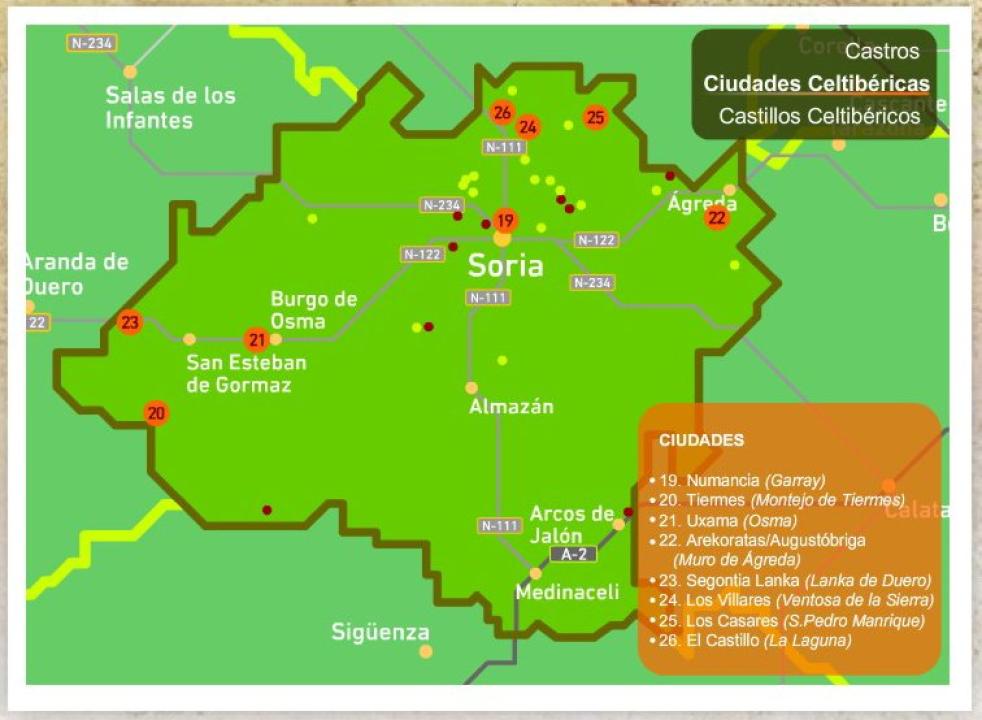

During the fourth century BCE a number of forts were deserted accusing throughout this century and the next, a series of important changes in the landscape and reflected in an increase in population (40% are newly created) with its necropolis, reflecting higher population. Is charged gradually diversified pattern of settlements, with a tendency largest nuclei, 4 to 6 ha. but continue to dominate the small one and two hectares.
These settlements show preference to occupy prominent hills in the wide plains suitable for rainfed agriculture. The option for agricultural areas is also reflected in the greater proximity of settlements to the river valleys, seeking complementarity of the most fertile lands with wilderness potential of livestock and forest resources of the banks of rivers and mountains oaks, pines and junipers.
And is observed at this time one of the constants for the survival in this land, the complementarity of resources between agriculture and livestock. Poor soil, combined with the altitude and harsh climate, made ??it difficult to practice intensive agriculture in the territory. In these circumstances, the maintenance of a growing population must be made from extensive use, both for farming and for livestock. The almost single or monolithic reference to grain sown reveals the existence of a mobility that unfolded in close connection with a non-specialized livestock.
Also the "landscape" domestic changes, as ceramics by hand, and irregular dark tones, they will enhance technological and chromatically with ceramics and paintings vinous red tones as well as widespread iron. Shows how groups accuse Douro incidence of Iberian material culture: pottery wheel, pottery types and decorations.


